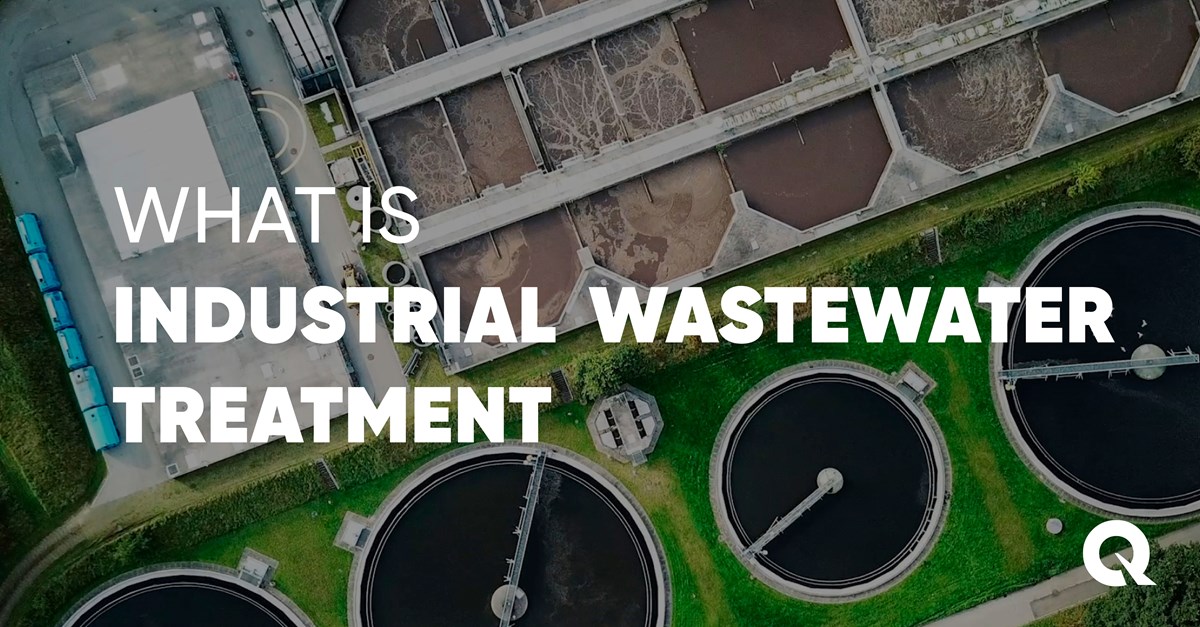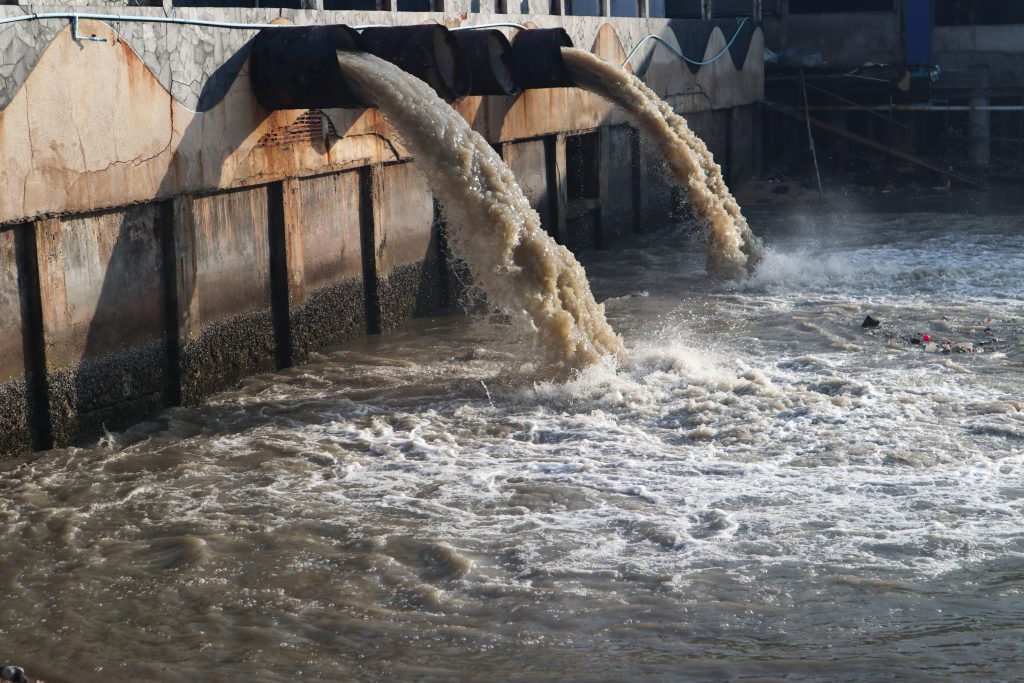Industrial Waste Water Treatment-- Customized Solutions for Effective Wastewater Treatment
Industrial Waste Water Treatment-- Customized Solutions for Effective Wastewater Treatment
Blog Article
Trick Techniques in Hazardous Waste Water Therapy Procedures
The treatment of commercial wastewater is a vital element of ecological monitoring, including a variety of strategies made to mitigate the impact of pollutants. Innovations in technologies such as membrane filtration and advanced oxidation processes offer ingenious remedies for boosting therapy effectiveness.
Physical Treatment Techniques
Exactly how successfully can physical therapy approaches address the complexities of industrial wastewater? Physical treatment techniques play a crucial duty in the initial phases of wastewater administration, concentrating mostly on the elimination of solids and big particulates. Methods such as filtration, flotation protection, and sedimentation are essential for decreasing the concentration of put on hold solids, therefore boosting the effectiveness of subsequent treatment procedures.
Sedimentation includes the gravitational settling of solids, enabling the splitting up of larger materials from the wastewater. This method is particularly reliable in making clear water before chemical or biological treatments. Purification, on the various other hand, makes use of numerous media to capture particle matter, ensuring that smaller sized impurities are gotten rid of. This strategy can be customized to fit different kinds of industrial effluents, producing more clear effluent streams.
Additionally, flotation protection methods, which utilize air bubbles to raise put on hold solids to the surface area for removal, are reliable in dealing with wastewater with high focus of fats, oils, and greases. Overall, physical therapy techniques act as an important primary step in the comprehensive administration of commercial wastewater, guaranteeing that the lots on succeeding treatment phases is reduced and enhancing total therapy effectiveness.
Chemical Treatment Strategies
While physical treatment approaches lay the groundwork for efficient wastewater administration, chemical therapy methods are important for dealing with the a lot more complicated impurities usually found in industrial effluents. These methods make use of various chemical representatives to precipitate, reduce the effects of, or oxidize damaging substances, making certain an extra detailed removal of toxins.
One common strategy is coagulation and flocculation, where chemical coagulants such as aluminum sulfate or ferric chloride are included in promote the gathering of put on hold particles. This process enhances solid-liquid splitting up, lowering turbidity and enhancing water high quality. In addition, neutralization processes are utilized to readjust the pH of wastewater, utilizing acids or bases to neutralize acidic or alkaline streams, respectively.
Oxidation-reduction reactions play a crucial function in derogatory natural contaminants and pathogens. Chemical oxidants like hydrogen, ozone, or chlorine peroxide are utilized to damage down complicated organic substances, making them much less hazardous or more naturally degradable. Advanced oxidation procedures (AOPs) incorporate several oxidation strategies to improve contaminant removal performance.
Biological Therapy Processes
The efficiency of wastewater treatment is significantly improved by biological treatment procedures, which harness the natural metabolic tasks of bacteria to break down raw material and get rid of toxins. Industrial Waste Water Treatment. These procedures mainly entail anaerobic and cardio food digestion, each customized for particular sorts of wastewater
Aerobic therapy procedures make use of oxygen to support microbial growth, promoting the malfunction of organic toxins into co2 and water. Usual methods include turned on sludge systems, where oygenation tanks promote the mixing of wastewater with microbes, and dripping filters, which urge biofilm growth on media surfaces.
Alternatively, anaerobic treatment procedures happen in the lack of oxygen, utilizing anaerobic germs to decompose organic issue, leading to biogas manufacturing, a renewable resource source. Anaerobic digesters are usually utilized in commercial setups for this purpose, successfully minimizing the volume of sludge while creating important biogas.
The option of a biological treatment approach depends upon wastewater features, therapy goals, and regulatory requirements. The assimilation of biological procedures in wastewater therapy not just improves contaminant removal efficiency but also promotes sustainability by minimizing chemical use and supporting source recovery.
Advanced Oxidation Processes

Usual AOP strategies consist of Fenton's photocatalysis, ozonation, and reagent. Fenton's reagent, a mix of hydrogen peroxide and ferrous iron, catalyzes the formation of hydroxyl radicals, making it reliable for treating wastewater including phenolic substances and other recalcitrant substances.
AOPs provide several advantages, consisting of decreased sludge production and the ability to treat wastewater with high focus of natural contaminants. The execution of AOPs requires cautious consideration of operational parameters and cost-effectiveness, making certain that these advanced techniques are suitably incorporated into existing wastewater treatment systems.
Membrane Layer Filtering Technologies

Microfiltration works for removing put on hold microorganisms and solids, while ultrafiltration targets smaller natural particles and infections. Nanofiltration bridges the gap between ultrafiltration and reverse osmosis, successfully eliminating natural compounds and divalent ions. Reverse osmosis supplies the highest degree of filtration, made use of largely for desalination and getting rid of mono-valent ions.
Membrane technologies use numerous benefits, including reduced power intake compared to standard therapy approaches, modular style for scalability, and the capacity for water recovery and reuse. Nevertheless, obstacles such as membrane layer fouling and the need for normal maintenance have to be addressed to ensure system efficacy. On the whole, membrane purification innovations represent a vital component of modern commercial wastewater therapy strategies, promoting sustainability and source conservation in water monitoring.
Verdict
To conclude, industrial wastewater treatment employs a varied selection of techniques, including physical, chemical, organic, and progressed methods. Each method plays a vital role in successfully attending to numerous pollutants, improving water top quality, and promoting source sustainability. The assimilation of these strategies fosters an extensive therapy method, making certain that industrial effluents meet regulatory requirements anonymous while lessening ecological influence. Proceeded improvements in these methodologies will even more improve the effectiveness and effectiveness of wastewater therapy procedures in industrial setups.
The treatment of commercial wastewater is a critical element of environmental monitoring, including a range of techniques created to mitigate the impact of impurities.Exactly how successfully can physical therapy methods attend to the complexities of industrial visit this website wastewater?Advanced oxidation processes (AOPs) stand for an advanced strategy in industrial wastewater treatment, created to effectively break down organic pollutants that are typically resistant to standard treatment approaches (Industrial Waste Water Treatment).In verdict, industrial wastewater treatment employs a diverse selection of strategies, including physical, chemical, organic, and progressed techniques. Proceeded improvements in these approaches will additionally enhance the effectiveness and performance of wastewater treatment procedures in commercial setups
Report this page